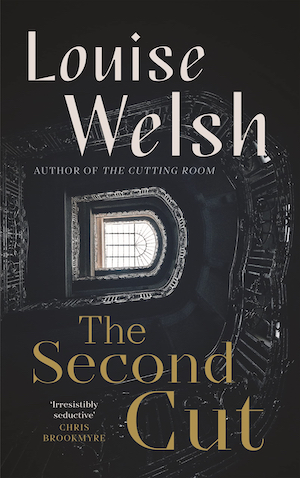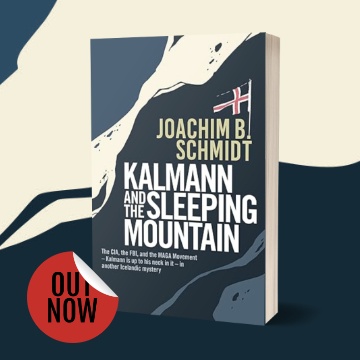
Louise Welsh’s The Cutting Room was a sensation when it was published in 1999. It was a brilliant debut from a provocative new voice in British crime fiction, infusing a Gaelic vibe with a creepy gothic air. Tartan noir credentials firmly established, there was a touch of wry humour to spice the pot and it was also reminiscent of Peter Ackroyd’s Hawksmoor for its growing sense of dread. A lot for a sequel to live up to, and The Second Cut is one that reflects a changed world.
Our protagonist, Rilke, is at a gay wedding among members of the LGBTQ+ community enjoying themselves. It makes him think about how it used to be – out-of-sight gay bars, hidden lifestyles. But not anymore, things are more open. He still works for Bowery Auctions in Glasgow and his old friend JoJo comes over. JoJo has had useful tips for Rilke in the past, but he doesn’t get to the point quickly.
As Jojo talks we realise that he lives a chaotic, drug-fuelled life and needs a bit of money. He’s got a tip on a big house in Galloway that two brothers are selling on behalf of their aunt, whose care needs mean she’s in an expensive home abroad. Normally Rose handles the money but Rilke gives JoJo a few quid to tide him over, if it pans out there’ll be more. Only the next time he sees his friend the man is dead.
Rilke has to identify JoJo at the morgue. The policeman in charge of the investigation, Inspector Anderson, doesn’t seem to care much about a dead, gay junkie found lying in the street. Rilke thinks JoJo – or Joseph Nugent – deserves more and that the police should determine if it was misadventure, suicide or worse. How JoJo died is unclear but what is clear is that Anderson won’t put much effort into it. Rilke gives his statement; he might have been the last person to have seen JoJo alive and can’t help feeling responsible.
Meanwhile, the country house JoJo steered him toward is in the posh Grey Gardens area. Rilke is met by one of the Forrest brothers who says his aunt neglected the place over the years and the clearance has to be done ASAP. Inside, Rilke makes a shocking discovery that leads him to think he’s not getting the full story. He can’t begin to imagine where this will lead him. A young man who says he’s a pal of JoJo’s turns up begging Rilke’s help to bury their friend, and that’s not straightforward either.
As Rilke digs for the truth his relationship with the police is fraught and the trail leads to exploited Vietnamese refugees, people trafficking, local gangster Ray Diamond and a clutch of dark rooted and disturbing crimes.
So how does Rilke’s reality play out today? It was still pretty rare to have a gay protagonist in a mainstream crime novel in 1999 but this character endeared himself to a wide audience. Welsh reflects how much have things changed in the intervening 23 years, in relation to society and acceptance of people’s sexuality. In that sense The Second Cut is a political novel, a comment on othering and the level of tolerance for difference in the community. It’s a recognition of the gay community and an affirmation of LGBTQ+ sexuality. As such the points are well made – and crucially, this is a thriller after all, such themes are woven skilfully into the narrative without slowing the momentum of the murder mystery.
Reprising Rilke is inevitably about contrasting now with the past. Times have changed and so has Rilke. He’s older but is he wiser? His distinctive way of seeing the world, partly based on how the world sees him, is intriguing and makes for a welcome return. This is the post-COVID crisis world, something that plays into the ambiance of the novel. While the atmosphere of The Cutting Room is invoked, this doesn’t have quite the same deep, dark gothic tones. It is nonetheless creepy and a sense of apprehension builds alongside the action. It has that inventive, off-kilter feel Welsh always seems to achieve with her fiction and her character perspectives are engaging.
Rilke is likeable and despite the dark story he brings a lot of humour to events. This is a satisfying mystery, well-plotted and properly twisty. It’s also very relevant, a meditation on how easily we other people, how we value lives, those who are different to us; migrants, old people, those of a different sexuality. The Cutting Room has acquired a certain iconic status over the years, revisiting it is a brave venture and The Second Cut is every bit a worthy sequel. It doesn’t quite hit the same heights, but it’s a gripping and thought-provoking read by an author with a distinctive style. Louise Welsh is a rare gem in Scottish crime fiction.
Also see Val McDermid’s How the Dead Speak or read our Denise Mina interview.
Canongate
Print/Kindle/iBook
£6.99
CFL Rating: 4 Stars










